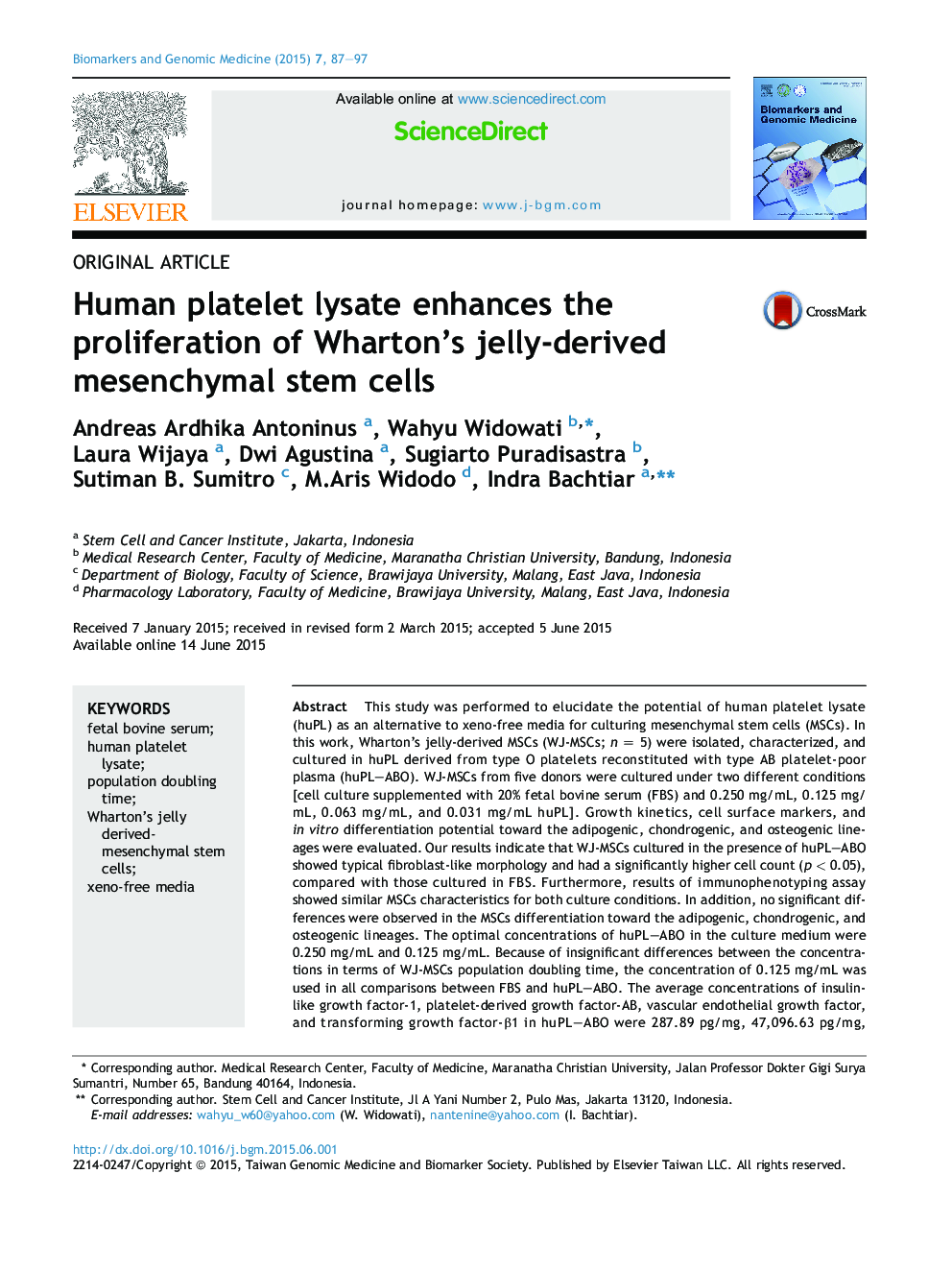| کد مقاله | کد نشریه | سال انتشار | مقاله انگلیسی | نسخه تمام متن |
|---|---|---|---|---|
| 3459303 | 1231135 | 2015 | 11 صفحه PDF | دانلود رایگان |

This study was performed to elucidate the potential of human platelet lysate (huPL) as an alternative to xeno-free media for culturing mesenchymal stem cells (MSCs). In this work, Wharton's jelly-derived MSCs (WJ-MSCs; n = 5) were isolated, characterized, and cultured in huPL derived from type O platelets reconstituted with type AB platelet-poor plasma (huPL–ABO). WJ-MSCs from five donors were cultured under two different conditions [cell culture supplemented with 20% fetal bovine serum (FBS) and 0.250 mg/mL, 0.125 mg/mL, 0.063 mg/mL, and 0.031 mg/mL huPL]. Growth kinetics, cell surface markers, and in vitro differentiation potential toward the adipogenic, chondrogenic, and osteogenic lineages were evaluated. Our results indicate that WJ-MSCs cultured in the presence of huPL–ABO showed typical fibroblast-like morphology and had a significantly higher cell count (p < 0.05), compared with those cultured in FBS. Furthermore, results of immunophenotyping assay showed similar MSCs characteristics for both culture conditions. In addition, no significant differences were observed in the MSCs differentiation toward the adipogenic, chondrogenic, and osteogenic lineages. The optimal concentrations of huPL–ABO in the culture medium were 0.250 mg/mL and 0.125 mg/mL. Because of insignificant differences between the concentrations in terms of WJ-MSCs population doubling time, the concentration of 0.125 mg/mL was used in all comparisons between FBS and huPL–ABO. The average concentrations of insulin-like growth factor-1, platelet-derived growth factor-AB, vascular endothelial growth factor, and transforming growth factor-β1 in huPL–ABO were 287.89 pg/mg, 47,096.63 pg/mg, 150.93 pg/mg, and 74,817.76 pg/mg, respectively. huPL–ABO produced by this method was able to enhance the WJ-MSCs proliferation rate constantly and decrease the required time to reach confluence compared with the FBS culture condition.
Journal: Biomarkers and Genomic Medicine - Volume 7, Issue 3, September 2015, Pages 87–97